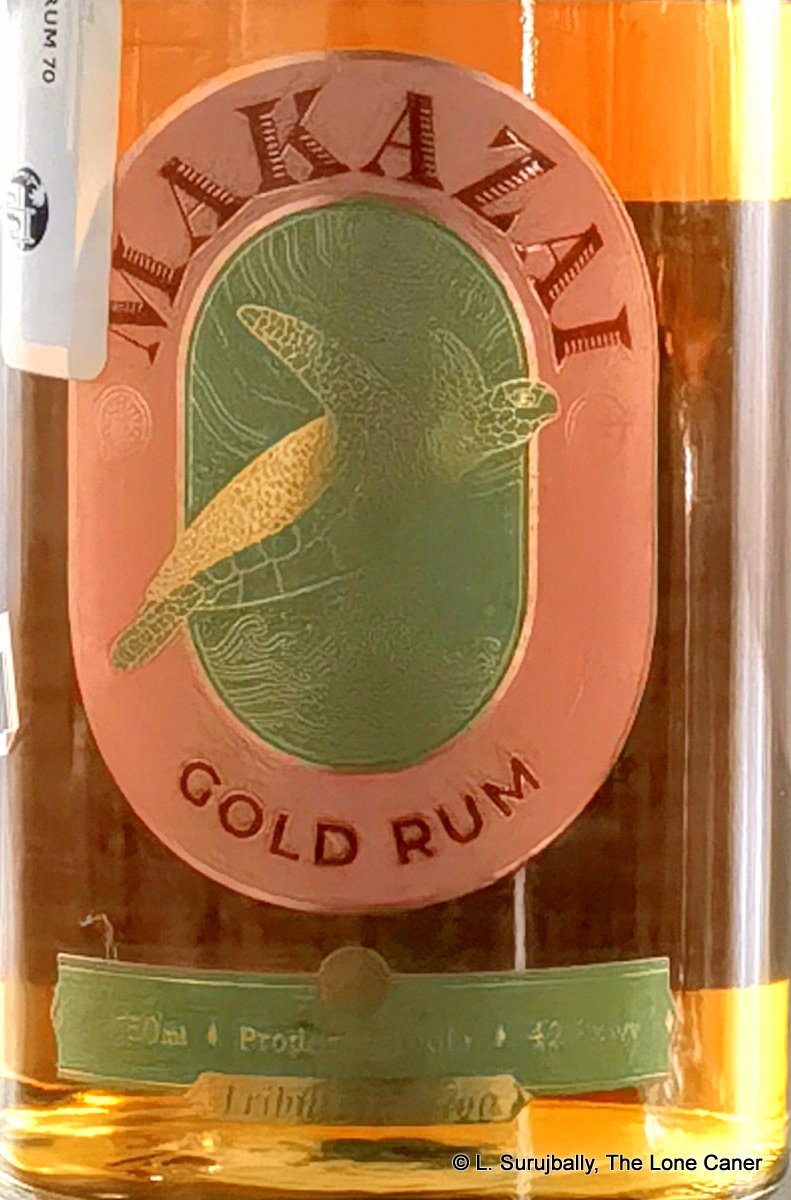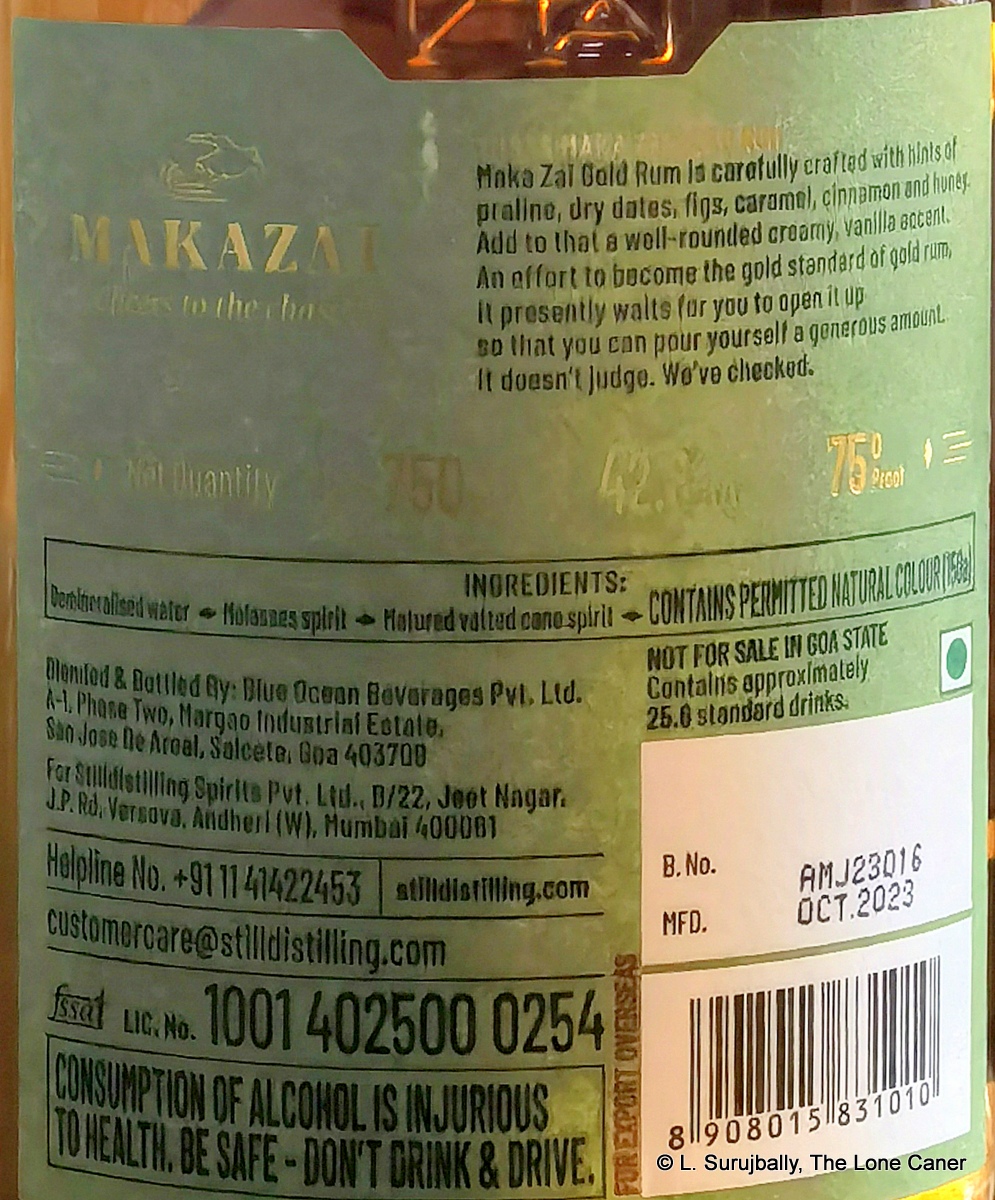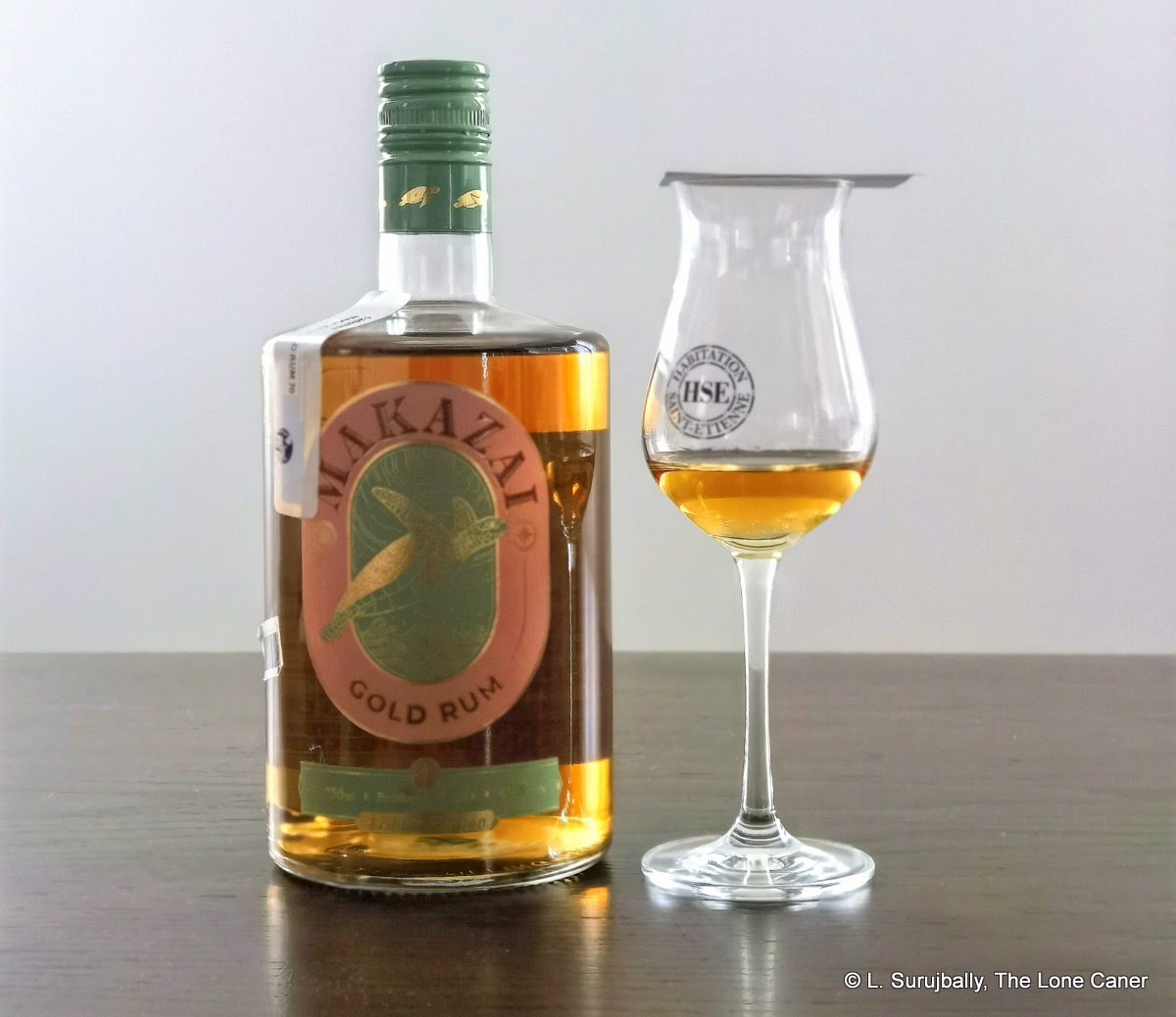For those of not actually from India or part of the extended diaspora, the only rums from the subcontinent which most of us ever knew about were the Old Monk, the Amrut Two Indies and Old Port, and maybe a smattering of others like MacDowell’s, Hercules, Contessa, and, more recently, the Camikara. Yet India has been making distilled spirits for centuries, including from sugar cane, and so it comes as no surprise that as the growth of rum as a premium spirit continues around the world, local entrepreneurs would look to establish small craft brands or distilleries of their own. Such spirits would go beyond the doctored mass-market hooch which permeates the local market and adhere to more exacting standards set by small microdistilleries around the world.
Whether the recently established company of Stilldistilling Spirits will be able to mine that vein of perceived quality remains to be seen. I do not hold out much hope when a company tells us little (or nothing) about sourcing methods, production, blending and ageing strategy. We do, on the other hand, get a lot of hagiographies about the founder, and much elevated rhetoric about inspirations, logo selection and mission statements. Which, to me, is less than helpful in assessing the rum itself.
 Be that as it may, here is what is known about the Makazai Gold “Tribute” Rum. All ingredients and physical components of the bottle are Indian made. The actual source of the distillate is never disclosed, though it is implied to be Goa or Maharashtra, and is stated in a 2021 Rumporter article to be 2½ year old aged cane spirit from the Punjab (something of a problem since that could mean a neutral spirit or one from cane juice) combined with molasses spirit (ditto, except now we don’t know if there is any ageing involved here as well). Blending and bottling takes place in Goa where the owners have leased a facility to do so, and until recently the rum was only sold there. It’s 42.8% ABV, which is sort of standard strength over there, and equates to 75 proof (or “25 degrees under proof”) under the old Imperial system.
Be that as it may, here is what is known about the Makazai Gold “Tribute” Rum. All ingredients and physical components of the bottle are Indian made. The actual source of the distillate is never disclosed, though it is implied to be Goa or Maharashtra, and is stated in a 2021 Rumporter article to be 2½ year old aged cane spirit from the Punjab (something of a problem since that could mean a neutral spirit or one from cane juice) combined with molasses spirit (ditto, except now we don’t know if there is any ageing involved here as well). Blending and bottling takes place in Goa where the owners have leased a facility to do so, and until recently the rum was only sold there. It’s 42.8% ABV, which is sort of standard strength over there, and equates to 75 proof (or “25 degrees under proof”) under the old Imperial system.
With this background dispensed with, what is the gold rum actually like?
Succinctly put, it’s a bit better than entry level, but not much. There you are. You may cease reading.
The nose is immediately problematic because not much happens and what does happen is lacklustre – which is a shame, because what little one does sense, is at least intriguing. There’s ghee and cooking oil smoking in an overheated cast iron pan, plus turmeric and honey as the primary elements. These are then added to with a slightly sweet aroma of stewed apples, cinnamon, light vanilla, cardamom and tinned peaches. It’s all very delicate and vague, and there’s a thinness to it that doesn’t really work for me.
On the palate it’s no better: “thin and flat” read my terse notes. It’s somewhat akin to the let down of the Camikara 3YO (review coming soon to the unread blog near you) which was also 42.8% and had a similarly scrawny corpus. It is only with some effort that I can pick out honey, figs, biscuits in milky tea, and (oddly enough) some red currants – it’s nice but honestly, not enough either; and the finish, which is short in duration and quite easy, closes things off with something of a whimper: some indeterminate dark fruit, cinnamon, vanilla and a touch of brine and salty caramel chocolate
That there are so many notes to write down is to the rum’s credit, and there is a certain “tawniness” to it that I like – I’ve detected that ghur note in the profile of many Indian rums, suggesting a jaggery based source. The issue is that the various parts don’t play well together – the balance is off and it leans too much to the sweet spices side without a countervailing tart or sour aspect that would make it more interesting. Plus, the whole thing lacks body, heft, a certain force that would make it memorable. If they ever solve that issue – whether by naking it stronger or improving the blend or actually distilling their own rum instead of getting it from elsewhere and cobbling a blend together – then they may really have something to show off. For now, the rum train has limped into the station minus several cars.
(#1087)(79/100) ⭐⭐⭐
Other notes
- My deepest appreciation to Nikkhil of WhiskyFlu, who provided the bottle gratis. His website and IG feed is always worth a look, and he’s a great guy to boot.
- My hydrometer tests this out at 43%, so it’s clean from that perspective.
- The now-usual video review of this rum is here
Company background
Makazai is actually a two word term “Maka Zai” meaning “I want” in Konkani, the language spoken in Goa and Maharashtra (in central-west India). It was made the brand name by the founder of the company, Katsuri Banerjee, who left a career in financial services to take up bartending in a bar named Koko, located in an upscale neighborhood in Mumbai called Lower Parel.
 Once she qualified as a bartender she wanted to also become a blender and create her own spirits – whether whisky or rum or gin is not entirely clear, though eventually, as we see here, it was rum that won out perhaps because the competition for premium craft rum space was less. After interning at an (unnamed) Indian distillery and settling on making a rum, Stilldistilling Spirits was incorporated in 2020 with funds raised from friends and family and managed to survive the global COVID shutdown by concentrating initially on branding and packaging, before emerging in 2021 with a white rum (the “Bartender’s Edition” geared to the mixologists) and a gold one (the “Tribute Edition” – it is meant to be a standard celebratory tipple for everyone). There is an aged limited edition called the Mesma with a mere 600 bottles in circulation, about which as little is known as the other two.
Once she qualified as a bartender she wanted to also become a blender and create her own spirits – whether whisky or rum or gin is not entirely clear, though eventually, as we see here, it was rum that won out perhaps because the competition for premium craft rum space was less. After interning at an (unnamed) Indian distillery and settling on making a rum, Stilldistilling Spirits was incorporated in 2020 with funds raised from friends and family and managed to survive the global COVID shutdown by concentrating initially on branding and packaging, before emerging in 2021 with a white rum (the “Bartender’s Edition” geared to the mixologists) and a gold one (the “Tribute Edition” – it is meant to be a standard celebratory tipple for everyone). There is an aged limited edition called the Mesma with a mere 600 bottles in circulation, about which as little is known as the other two.
What little most non-residents know of alcohol in Goa comes about because they went there on a vacation, or tasted the local liquor called Feni. However it would appear that Goa has, of late, become something of a manufacturing hub for distilled homegrown spirits (Google maps shows around forty distilleries there), not least due to the ease of laws relating to liquor production and marketing which constrain other provinces in a still-conservative India. Whether these are new or old companies, at least some of the blend components of the rums released by the Makazai comes from one or more of these establishments, though it is my personal belief that some is sourced from elsewhere in India (the references to “heritage suppliers” suggests this). The company has leased a blending and bottling plant in Goa to handle the physical production, and has expended from and initial 200 cases of sales back in early 2021, to 2,000 in early 2022, at the time mostly sold in Goa, Karnataka, and Maharashtra (and expansion to other parts of India ongoing).
Opinion
While I appreciate the sheer guts, blood, sweat and tears that must go into getting an enterprise like this off the ground in India – especially for a female entrepreneur in what is a resolutely male dominated profession and tipple – I am somewhat impatient with Stilldistilling’s website and the press articles I’ve referred to in this article. That stems from an excess of marketing folderol that’s all sound and fury signifying nothing, versus a paucity of facts that might help a consumer get, you know, some real info. This is the sort of thing that annoys me with rums from the Americas, but irrespective of location, for people who should have their fingers on the pulse of current trends in transparency to be pulling this kind of advertising-only crap on us when launching a new brand strikes me as shortsighted, and somewhat indifferent to us as consumers.
I deduct no points for lack of disclosure: however, the lack of details in what makes the rum what it is annoying. We don’t know too many things here. Which distillery (or distilleries) provided the distillate; data about the base source of cane juice, molasses or neutral spirit; what kind of still or stills made it; anything about fermentation; how long it was aged for and where and in what kinds of barrels; or what the outturn was. Not all of these things are necessary – indeed, one could cynically argue that none of them truly are, if all you want to do is drink the thing – but the fact remains that in today’s rum world where the scars of the sugar wars and battles over transparency still run deep, and cause elevated blood pressure to this day, it is ridiculous to not be provided at least some of it. And purported alco-bev veterans are supposed to be behind behind this rum? One wonders if they learned nothing from all the social media bloodletting over the last decade.
Modern consumers and producers who really want rum to be taken to the next level cannot be made or expected to accept a rum on trust, which has zero verifiable background info. Not in this day and age. Trust and reputation for square dealing and disclosure go a long way to establishing a company’s street cred and character. If a new rum producing company claims to want to become a true craft premium rum producer, then it had better start making disclosure a priority – otherwise, like so many other Indian rums, it will remain there and never attain the global heights to which they aspire.
